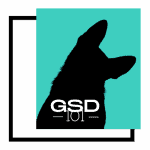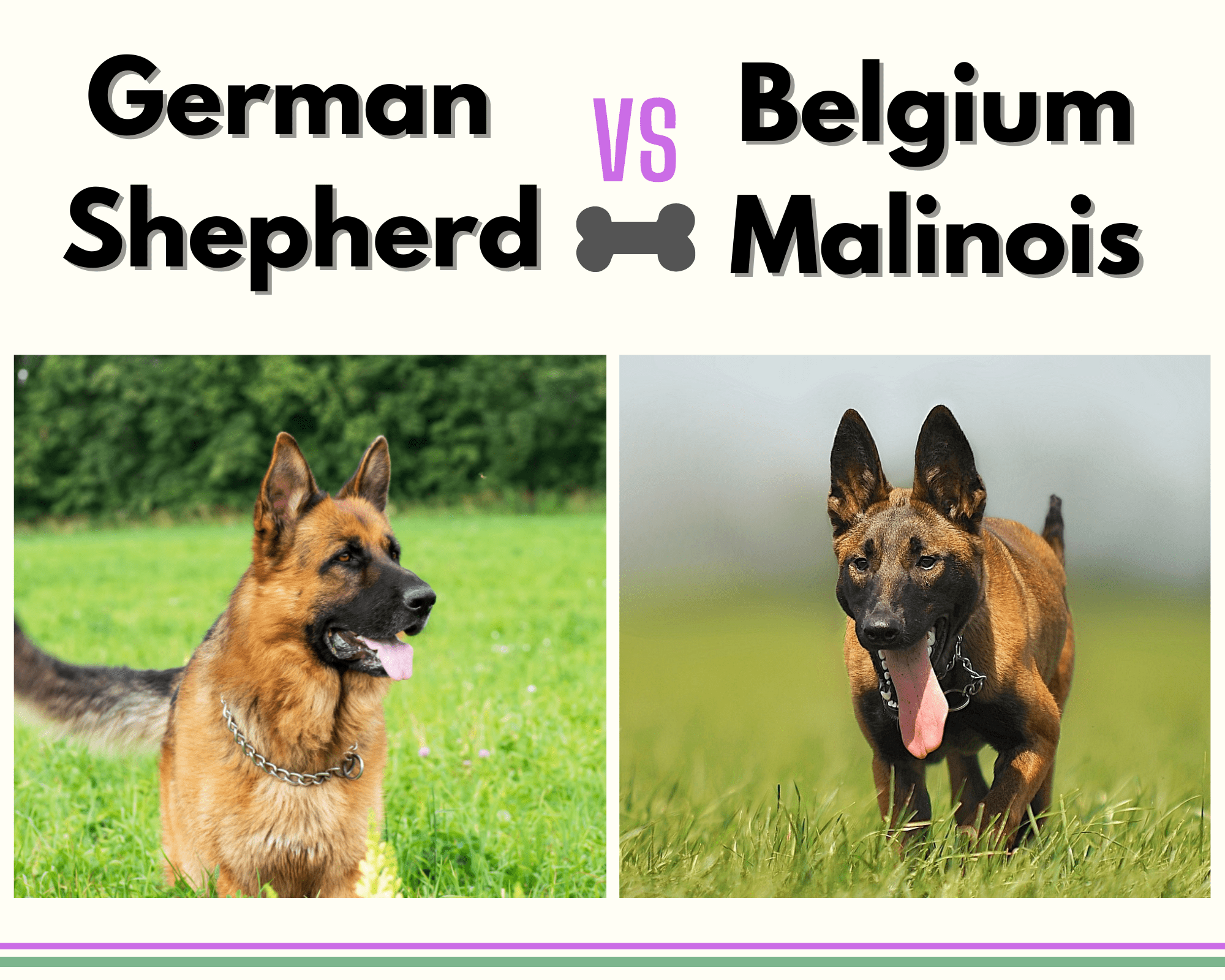It is not uncommon for people to confuse the Belgium Malinois for being just a shorter-haired version of the German Shepherd. While these two breeds have some very similar traits, there are a handful of differences when it comes to their energy level, personalities, and lifestyle.
Both German Shepherd and Belgium Malinois are introduced at about the same time in the late 1800s. They are widely used as work dogs in law enforcement. The GSD is the 3rd most popular dog breeds recognized by the AKC (vs 41st for the Malinois). The GSD can make a great family pet but the more intense Malinois are not the best choice for a standard family.
In this article, we are going the examine the origins, appearance, temperament, energy level, lifestyle as well as popularity of the two breeds. Here is a quick summary:
| German Shepherd | Belgium Malinois | |
| Origin | Originate as a herding breed and developed by Captain Max von Stephanitz in the late 1800s. | The Malinois was one of four varieties of Belgian Shepherd dogs used for herding in the late 1800s. |
| Size | 22-26 inches tall | 20-24 inches tall |
| Weight | Males: 70-90 lbs. Females: 65-80 lbs. | Males: 60-80 lbs. Females: 40-60 lbs. |
| Coat | Double coated. Available short or long. | Double coated. Available in short only. Flat and straight. |
| Color | Black and tan is the most commonly recognized color. Rarer color variations, including sable, black, white, liver, and blue are available as well. | Usually appears in mahogany with lighter shades on the stomach. Their faces usually have a black mask. |
| Lifespan | 9-13 years | 12-14 years |
| Energy level | High. Need at least 90 minutes of physical and mental exercise per day. | Extremely high. Cannot be contented without a minimum of 120 minutes of high-level exercise per day. |
| Family friendliness | Love and very protective of their family, very child friendly | Love their family. |
| Trainability | Great, can do just about any job they are assigned to | Great. They can be highly focused and agile, making them easy to train. |
| Popularity | Ranked as AKC’s 3rd most popular breed. | Ranked as AKC’s 41st most popular breed |
| Cost of a puppy | US$1,000 to $3,000 | US$2500-3000 |
Origins
Interestingly, German Shepherds and Belgium were introduced around the same time, and they were developed with a focus on their working abilities.
The German Shepherd Dogs were obviously originated in Germany. This breed was first responsible for herding sheep and protecting flocks from predators.
In 1899, while attending a show, Captain Max von Stephanitz was deeply impressed by a dog’s intelligence, strength, and obedience. He purchased the dog immediately. This very dog was then registered in the same year, under a new breed registry – as the German Shepherd Dog.
Related post: The White German Shepherd – the Ancestor of All GSDs
The Belgium Malinois, on the other hand, can be traced to a breeding pair owned by a shepherd from Laeken named Adrien Janssens. In 1885, he purchased a pale, fawn rough-haired dog called Vos I (which means fox in Flemish) from a cattle dealer in northern Belgium. Janssens used Vos I to herd his flock and also bred him to a short-haired, brindle-brown dog named Lise. Vos I and Lise are recognized as ancestors not only of the modern Belgian Shepherd Dogs.
The city of Malines had formed a club for the promotion of fawn shorthairs Belgian Shepherd dogs in 1898. Louis Huyghebaert, an early breeder under the “ter Heide” kennel name, as well as a judge, author, and the “godfather of the Malinois” (and the Bouvier), along with the Malines club had done much to help popularize these short-hairs, so the name “Malinois” came to be associated with the fawn shorthairs. (Source: dogtime.com)
Appearance
German Shepherds have a slightly larger build than the Belgium Malinios. GSD are taller and heavier than the Belgium Malinios in general.
German Shepherd is a well-proportioned dog. Their head is broad and tapers to a sharp muzzle. Their ears are rather large and stand erect.
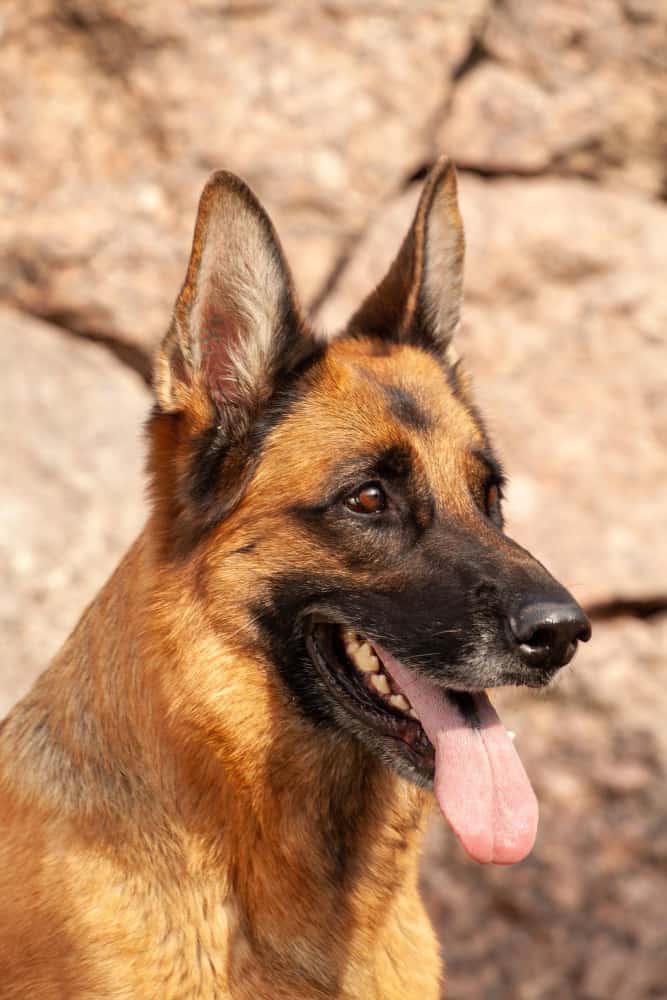
Malinois has a particularly athletic physique. They are sleek and elegant. Their ears are also upright. They have a smaller head in proportion and tend to be broader across the body, chest, and skull.
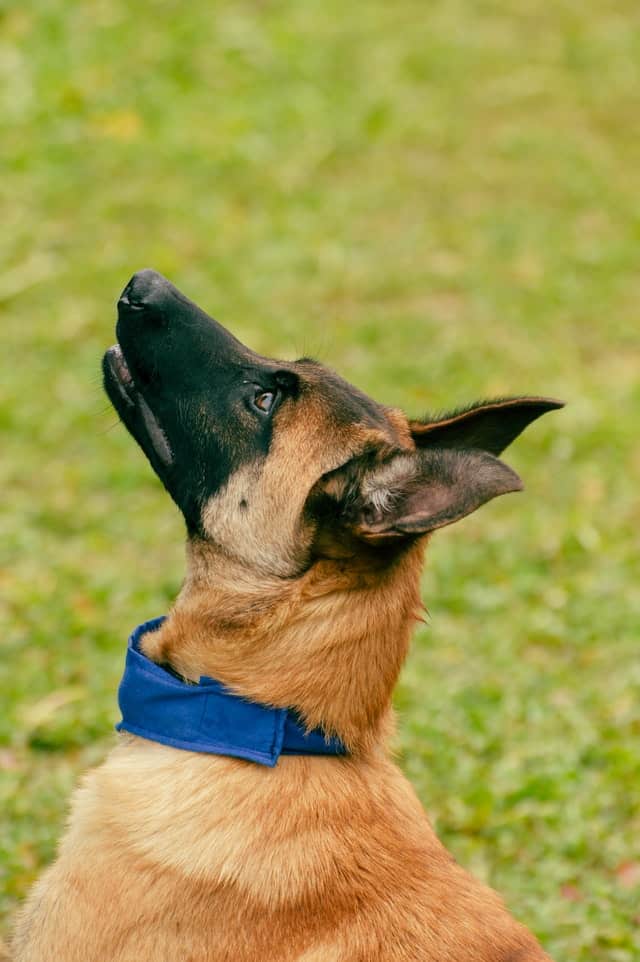
Coat length
Both German Shepherd and Belgium Malinois have a double coat. While GSD comes in short and long-coated, the Malin only has a short coat that is a lot less dense than the short coat a GSD has.
That being said, the German Shepherd Dog is known for shedding much more heavily than Malins and will need much more grooming.
For Malinois, their coat should be comparatively short and straight, hard enough to be weather resistant, with a dense undercoat. It should be very short on the head, ears, and lower legs. The coat conforms to the body without standing out or hanging down.
Color
The GSD comes in a much wider variety of colors: The classic black and tan is their signature coat color. Rarer colors including sable, black, white, liver, and blue are available as well. Yet, the White German Shepherd is not recognized as a show color by the American Kennel Club.
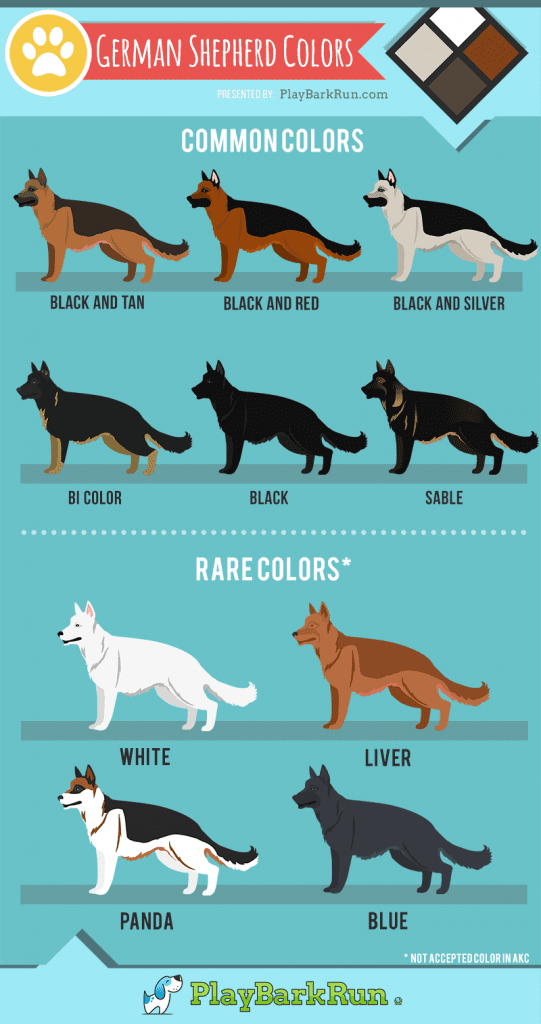
Belgium Malinois has a rich fawn to mahogany coat color, with black tips on the hairs making them distinctive. They have a black mask and ears.
Temperament
Both German Shepherds and Belgian Malinois are bred to work with and for people. As with most herding breeds, they’re smart and can learn fast.
German Shepherd is loyal and affectionate. They have strong guarding instincts and don’t make friends immediately, but once they do. With their family, they’re easy-going and approachable, but when threatened, they can be strong and protective, making them excellent watchdogs.
This highly intelligent and trainable breed thrives on having a job to do. And they can be trained to do just about anything, from tracking bombs on the battlefield to being an eye-seeing dog.
Belgian Malinois is an outstanding working dog who is confident and protective in any situation. Likewise, they’re also affectionate with family members but reserved toward strangers.
The watchdog abilities of the Malinois are excellent. They protect their people and property with only as much force as is required. Belgium Malinois is known for often bonding extremely strongly with one particular person.
GSDs often have a very close, protective bond with their entire family. This makes a GSD more suitable for being a family pet, especially with young children.
Early socialization is a must for both breeds – exposure to as many different people, sights, sounds, and experiences as possible. It is essential for ensuring the puppies grow up to be well-rounded dogs.
Both dogs excel not only in herding, but also in protection and law enforcement; drug, bomb, and gas detection; search and rescue; tracking; obedience; sledding; agility; and therapy assistance to disabled, ill, or elderly people.
Evergy levels
While both are high-energy breeds that need a lot of exercise and stimulation. Both dogs are large, active breeds and would thrive with a large yard and lots of daily exercises.
That said, the Belgium Malinois is considered to be one of the most energetic and athletic breeds out there and so will usually require a lot more intense activities than any GSDs.
With their sleek body build, Belgium Malinois is an expert climber and can easily scale fences that are six feet high. If they do have access to a garden, it will need to have high enough fences and be extra secure.
GSDs, on the other hand, can jump over fences as well as dig up holes in your yard if left bored and unattended. It is very important to help these dogs channel their energy before it manifests itself into destructive behavior.
You may also like:
How to Stop a Dog from Chewing on Everything: 5 Simple Solutions
How to Stop My Dog From Excessive Barking? 6 Tips That Work
Living needs
German Shepherd dogs are active and most happy to have something to do. They need at least 1.5 hours of exercise daily.
German Shepherds tend to be more adaptable than Belgium Malinois when it comes to smaller living quarters like apartments. They will get less restless in smaller spaces once they’ve outgrown puppyhood. They are also slightly more toy-driven and entertained than Belgium Malinois.
You may also like:
What Is It Like to Own a German Shepherd? Your Life Will Never Be the Same
Can I Work Full-time With a German Shepherd?
How to Prepare Your German Shepherd Dog for Going Back to Work?
Malinois enjoys spending time outside, but what they want most is your constant companionship. They form intense bonds with their owners and are happiest accompanying their humans everywhere they go.
Malinois instinctively displays herding behavior such as chasing and circling, moving effortlessly for hours and nipping at people’s heels. The dog is good for working and competitive obedience, but not for toddlers who run and scream.
Belgians are only reserved for the right homes that can give them plenty of exercise. While both breeds are not a dog that is suited to be left for prolonged periods on their own, the Belgium Malinois more easily get bored, hyperactive, and have separation anxiety.
Popularity
German shepherd dogs were introduced in the United States by soldiers returning home from World War I. The breed caught the public eye because of movie stars Rin Tin Tin. (See: Top Movies Featuring German Shepherds [Comedies, Dramas, Wars, Actions and More])
By World War II German Shepherds were the military breed of choice. The first guide dogs were also German Shepherds. Today, they are one of the most popular dogs in America. In 1999, German shepherd dogs were third on the American Kennel Club’s list of the Top 50 Breeds.
Related: Why Are German Shepherds Used as Police Dogs?
Belgian Malinois have often been used in the military and were used as message carriers, ambulance dogs, and to pull machine guns in World War I.
Today, the breed is a sought-after working dog, from herding and protecting livestock to serving alongside policemen—they’re more in-demand for these roles than even German Shepherds. With their gentle, playful demeanor and strong loyal tendencies, modern Mals also make great family pets. As of 2020, the Belgian Malinois is the AKC’s 41st most popular breed.
Final Thoughts
If you are an experienced dog owner and love working with and training a very active dog, then a Belgian Malinois could be a well-thought choice. Otherwise, if you are just a first-time owner and may not have the time, effort, and frequent access to outdoor facilities, a German Shepherd would be a better choice.
Sadly, many Malinois end up in rescue because the owners are not well aware of their specific needs. The fact is that they can be difficult to rehome, and their highly strung personalities mean they often do not cope well in the kennel environment.
Eric is a dog lover and a blogger. He loves spending time with dogs more than with humans. You will find him training himself for the next marathon when he is not writing. And he loves Thai food~
